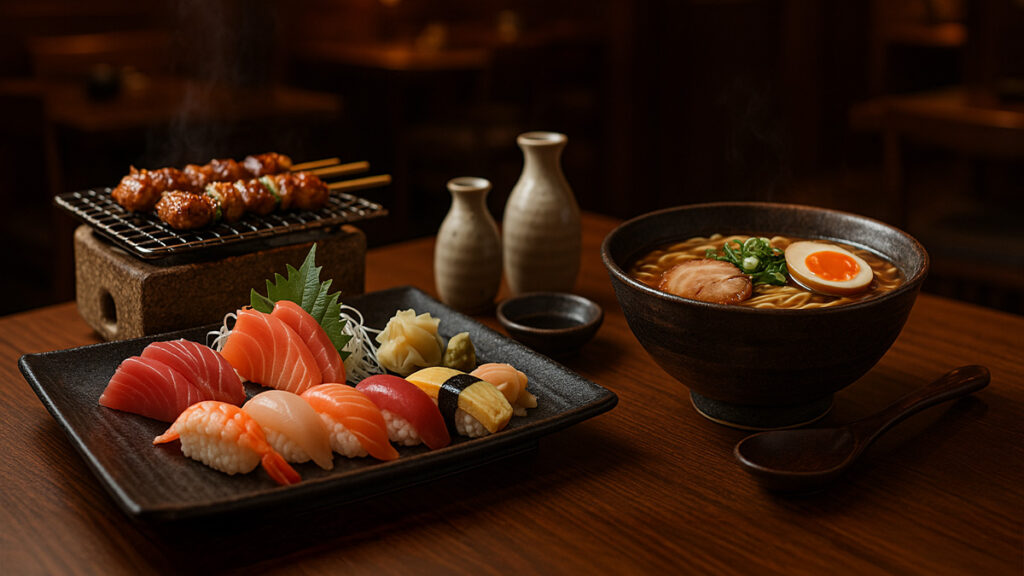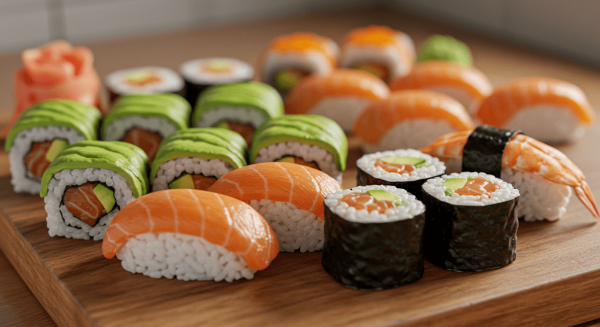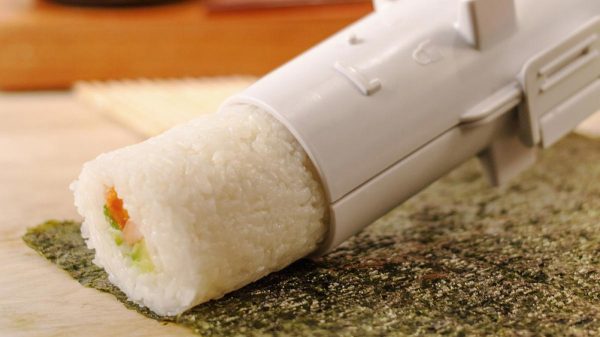Sushi, ramen, yakitori: origins of popular Japanese dishes

Japan, a fascinating archipelago rich in history and culture, is also renowned for its unique and refined gastronomy. Beyond the magnificent landscapes and ancient traditions, Japanese cuisine is a true invitation to travel, an exploration of flavors and textures that seduce palates around the world. From delicate sushi to comforting ramen and savory yakitori, each dish tells a story, reflects a particular culinary technique, and is part of a well-established tradition. This article takes you on a journey to the heart of these popular Japanese dishes, revealing the secrets of their preparation and the evolution of their popularity over the centuries.
Sushi: From preservation to refined tasting
The history of sushi is surprisingly linked to fish preservation. Far from the elegant and sophisticated image we have today, sushi was born out of a practical necessity: preserving fish through fermentation in rice. This technique, originating in Southeast Asia, spread to China and then to Japan, where it took root and evolved over time.
Narezushi: The ancestor of sushi. Narezushi is considered the oldest form of sushi. It consisted of wrapping fish (usually freshwater fish) in fermented rice for several months or even years. The rice, which had become acidic through fermentation, prevented the growth of bacteria and preserved the fish. Only the fish was eaten; the rice was discarded.
Nama-narezushi: A transition to eating rice. Over time, the fermentation technique was modified. The fermentation time was reduced, allowing both fish and rice to be eaten. This development gave rise to "nama-narezushi," a dish in which the slightly tangy rice began to be appreciated for its flavor.
Hayazushi: The Rise of Speed and Freshness. The Edo period (1603–1868) marked a turning point in the history of sushi. The rise of cities and the growing demand for quick and convenient dishes led to the creation of “hayazushi,” a sushi prepared with vinegared rice and fresh fish, without fermentation. This type of sushi, which was quicker to prepare and fresher, was an immediate success.
Nigirizushi: The modern form we know. Hanaya Yohei is credited with inventing nigirizushi, the form of sushi we know today, in the early 19th century: a small ball of vinegared rice topped with a slice of fresh fish. This innovation revolutionized the world of sushi and contributed to its rapid popularity, particularly thanks to the opening of sushi stands on the streets of Tokyo.
Ramen: A noodle soup with varied influences
Ramen, Japan's iconic noodle soup, has a more recent and international history than sushi. Although considered a quintessentially Japanese dish, ramen has Chinese origins and has been adapted and transformed over time to become the culinary specialty we know today.
Chinese origin: La Mian. Ramen is derived from “la mian,” a Chinese noodle soup. The term “ramen” itself is a Japanese adaptation of the Chinese pronunciation of “la mian.” La mian noodles were made by hand, repeatedly stretching and folding the dough to create long, thin noodles.
Arrival in Japan: Adaptation and Transformation. Ramen first appeared in Japan in the early 20th century, primarily in the Chinatowns of major cities like Yokohama and Kobe. Initially, ramen was considered a Chinese dish and was primarily consumed by Chinese workers and students.
The Post-World War II Boom: A Popular and Affordable Dish. After World War II, ramen enjoyed a significant boom in Japan. Food shortages and the availability of American wheat contributed to the popularization of ramen, which became an affordable and nutritious dish. Many ramen stands opened, offering different variations of the noodle soup.
Regional variations: A kaleidoscope of flavors. Over time, ramen has diversified into many regional variations, each with its own distinctive characteristics. Examples include tonkotsu ramen (made with pork bone broth) from Fukuoka, miso ramen (made with miso) from Hokkaido, shoyu ramen (made with soy sauce) from Tokyo, and shio ramen (made with salt) from Hakodate. Each region has developed its own recipes and ingredients, creating a veritable kaleidoscope of flavors.
Yakitori: Grilled skewers with universal charm
Yakitori, which literally means “grilled bird,” is a simple yet delicious dish consisting of skewered chicken (or other meats or vegetables) grilled over hot coals. Although simple in appearance, yakitori is a dish deeply rooted in Japanese culture, with a rich history and a wide variety of preparations.
Ancient History: Humble Origins. The history of yakitori dates back to the Edo period (1603–1868), when the consumption of poultry meat was limited due to religious restrictions and economic considerations. Yakitori was then considered a modest dish, consumed mainly by the lower classes.
Popularization after World War II: A dish accessible to all. After World War II, increased poultry production and improved preservation techniques made chicken more accessible to everyone. Yakitori became a popular and affordable dish, eaten at izakayas (Japanese pubs) and street stalls.
The diversity of skewers: An exploration of flavors. Yakitori offers a wide variety of flavors and textures. You can find skewers made from different parts of the chicken (thighs, wings, skin, heart, liver), as well as vegetable skewers (leeks, mushrooms, peppers) and even meatballs. Each type of skewer is seasoned differently, with sweet, savory, or spicy sauces.
Sauces and side dishes: An essential finishing touch. Tare sauce, a sweet and savory sauce made from soy sauce, mirin (sweet rice wine), and sugar, is an essential component of yakitori. It is used to brush the skewers during cooking, giving them an irresistible umami flavor. Yakitori is often accompanied by sansho pepper (a fragrant Japanese pepper), shichimi togarashi (a seven-spice blend), or grated daikon radish.
The yakitori experience: A moment of conviviality. Eating yakitori is often synonymous with conviviality and sharing. Izakayas, where yakitori are served, are popular meeting places where people gather to drink beer, sake, and enjoy delicious dishes in a relaxed atmosphere.
Conclusion
Sushi, ramen, and yakitori are just a few examples of the richness and diversity of Japanese cuisine. Each dish has a unique story, from humble origins to worldwide popularity. Understanding the history and traditions behind these dishes allows you to appreciate their flavor and authenticity even more. Whether you're a sushi loverWhether you're a ramen fan or a yakitori enthusiast, don't hesitate to explore the different regional variations and discover the secrets of Japanese cuisine. An unforgettable taste journey awaits you!
Beyond their delicious taste, these Japanese dishes also reflect a rich culture and ancestral know-how. They embody the Japanese philosophy of harmony, balance, and respect for ingredients. When you enjoy sushi, ramen, or yakitori, you're savoring not only a dish, but also a piece of Japanese history and culture.
So, the next time you're in the mood for a Japanese dish, take the time to learn about its origins and preparation. You might discover some fascinating anecdotes and gain an even greater appreciation for the complexity and subtlety of Japanese cuisine. Enjoy!



